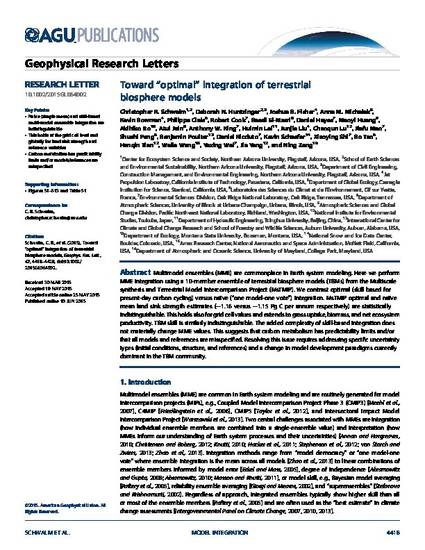
Multimodel ensembles (MME) are commonplace in Earth system modeling. Here we perform MME integration using a 10-member ensemble of terrestrial biosphere models (TBMs) from the Multiscale synthesis and Terrestrial Model Intercomparison Project (MsTMIP). We contrast optimal (skill based for present-day carbon cycling) versus naïve (“one model-one vote”) integration. MsTMIP optimal and naïve mean land sink strength estimates (−1.16 versus −1.15 Pg C per annum respectively) are statistically indistinguishable. This holds also for grid cell values and extends to gross uptake, biomass, and net ecosystem productivity. TBM skill is similarly indistinguishable. The added complexity of skill-based integration does not materially change MME values. This suggests that carbon metabolism has predictability limits and/or that all models and references are misspecified. Resolving this issue requires addressing specific uncertainty types (initial conditions, structure, and references) and a change in model development paradigms currently dominant in the TBM community.
- modeling,
- carbon cycle,
- model integration
Available at: http://works.bepress.com/chaoqun_lu/6/
